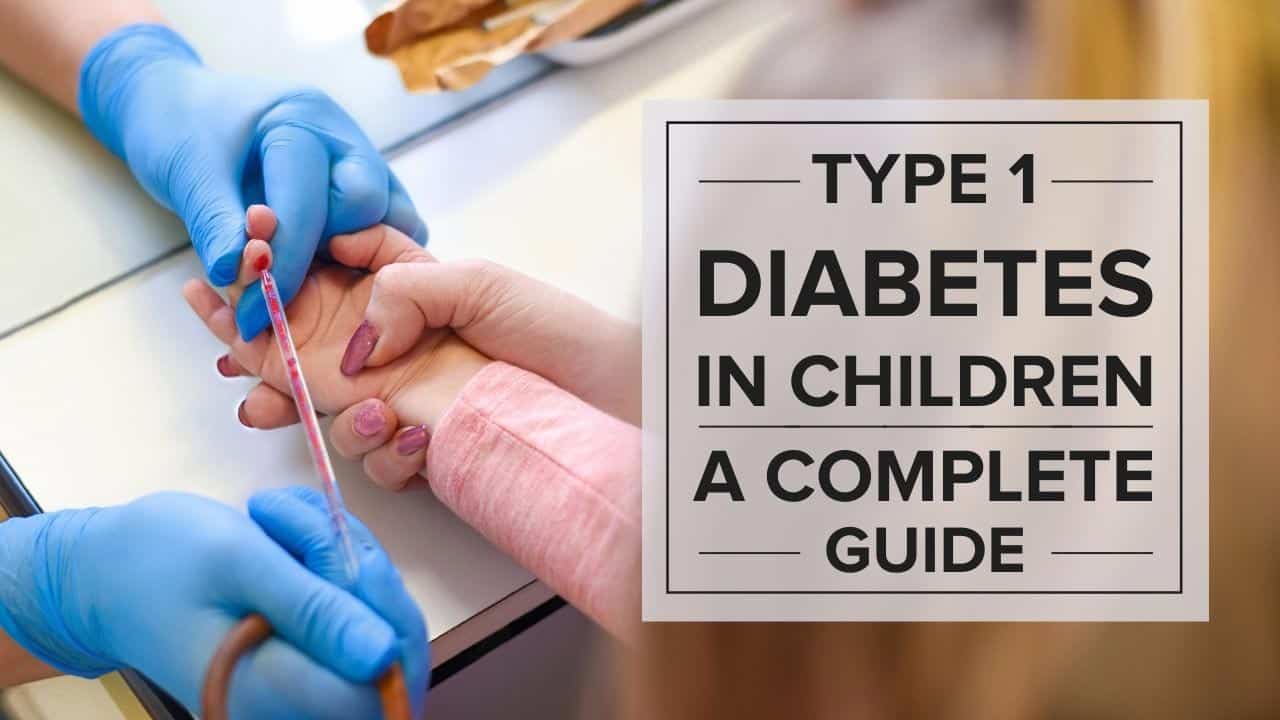
What Is Type 1 Diabetes?
Type 1 diabetes is an autoimmune disease in which your immune system mistakenly attacks the beta cells in your pancreas.
Since these cells are the part of your body that produces insulin (a master hormone that regulates your blood glucose), type 1 diabetes significantly increases your risk for hyperglycemia (high blood glucose) throughout life.
Often referred to as juvenile diabetes because it typically manifests before the age of 14, this condition currently has no known cure. However, children and adults that are diagnosed with type 1 diabetes can live long, happy, and healthy lives with the proper diet and treatment.
This ranges from completely reversing type 2 diabetes to turning type 1 diabetes into a superpower that gives you fine-tuned control of your body on par with top Olympians. Definitely not the life-shattering disability it was made out to be!
What’s The Difference Between Type 1 and Type 2 Diabetes?
Type 1 diabetes occurs when your pancreas is unable to produce enough insulin to effectively process your blood glucose. This can be solved by exogenous (external) insulin through a pump, syringe, or pen.
Meanwhile, type 2 diabetes occurs as a result of an underlying condition called insulin resistance, which is the buildup of excess dietary fat in cells that are not meant to store fat.
Your body is still producing enough insulin, but because of insulin resistance, your blood glucose spikes. This condition can be reversed by lifestyle changes.
What Causes Type 1 Diabetes In Children?

Type 1 diabetes occurs when your immune system mistakenly targets the insulin-producing beta cells in your pancreas as ‘foreign’, and creates antibodies to attack them. This is why type 1 diabetes is classified as an autoimmune condition.
Type 1 diabetes occurs differently worldwide (for example, 3/1000 children in the United States vs 0.15/1000 children worldwide) but there are currently no clear results about what causes this initial form of biological ‘friendly fire’.
For example, there is extensive research being done on certain risk factors ranging from the consumption of cow’s milk protein to distance from the equator, but these studies have been inconclusive.
However, there is one clear indicator of increased risk of type 1 diabetes, which is a family history of the disease.
How Is Type 1 Diabetes Diagnosed In Children
Type 1 diabetes typically manifests during two age ranges. The first is in young children between the ages of 4 and 7, and the second is in young adults between the age of 10 and 14.
Though children can transition healthily into adulthood with type 1 diabetes, it’s important to identify this condition when it first manifests to prevent late-term complications like diabetic ketoacidosis (DKA).
If your child develops any of the following symptoms, we recommend taking them in for a check-up with their pediatric care doctor.
Symptoms Of Type 1 Diabetes
Children with diabetes, especially younger children, can have a hard time identifying the symptoms of diabetes themselves, so if you notice any of these conditions consistently appearing or worsening, it’s worth visiting your doctor.
Type 1 Diabetes Diagnosis
If your child has been displaying symptoms of type 1 diabetes, the likely course of action with your healthcare professional will be an oral-glucose tolerance test (which tests your child’s ability to process glucose) as well as a few blood tests.
These tests can reveal several key indicators of type 1 diabetes, like increased ketones, low hemoglobin, or consistently high blood glucose.
If these tests come back positive, you’ll likely go for a follow-up series of tests with an endocrinologist, who can directly identify the presence of type 1 diabetes and prescribe a plan of action to stay on top of this condition.
How To Prevent Type 1 Diabetes In Children

According to the American Diabetes Association and all available research, there is still no conclusive way to fully prevent type 1 diabetes.
However, identifying this condition early can be key to putting in place good habits like diabetes care and preventing side effects. Working with your pediatrician and diabetes educators early can help your child form healthy habits.
Using exogenous insulin, controlling their blood glucose, eating a low-fat, plant-based, whole-food diet, and exercising often will all help your child stay healthy throughout life, and can help avoid complications like obesity, fatigue, or continuous reliance on medication.
Managing Type 1 Diabetes In Toddlers And Children

The most important part of managing type 1 diabetes with your child is finding a daily routine of glucose monitoring and insulin injections that works for both of you.
Building these habits early and consistently is crucial to ensuring that your child is able to maintain safe blood glucose levels (blood sugar levels), and can make what might initially seem like a hassle into a normal part of your daily routine.
There are a number of different options for blood glucose monitoring and daily injections to prevent hyperglycemia as well as hypoglycemia.
For example, insulin pumps and continuous glucose monitoring devices have become increasingly popular, in some cases replacing the older (but still reliable) methods of daily injections like fingersticks and an insulin syringe.
Every patient with diabetes is different, so you can work with your medical care team to figure out a strategy that works for you, and adjust as needed.
The Universal Good Habits
However, one thing that every child with type 1 diabetes can benefit from is daily physical activity and a low-fat, plant-based, whole-food diet that is high in whole carbohydrates.
Apart from the many documented benefits of this lifestyle — which include better mood and mental health, more energy, better immunity, and avoidance of chronic diseases — these habits can also help keep your child as insulin sensitive as possible.
Insulin sensitivity is the measure of how responsive your child is to insulin. More insulin sensitivity (and less insulin resistance) means that it’s easier to control your blood glucose, meaning they’ll need less medication and insulin, and have a reduced risk of long-term complications.
If you’d like to learn more about how this lifestyle can improve your child’s insulin sensitivity, increase time in range (TIR), prevent complications, and improve their overall health, we invite you to chat with our coaches.
Along with your diabetes care team, these experts can help you and your child form the crucial lifestyle habits that will set them up for a long, happy, and healthy life living with type 1 diabetes.
Lower Your A1c and Get to Your Ideal Body Weight ... Guaranteed

Your results are guaranteed. Join more than 10,000 ecstatic members today
Personalized coaching puts you in immediate control of your diabetes health, helps you gain energy, improves your quality of life, and reduces or eliminates your meds.




